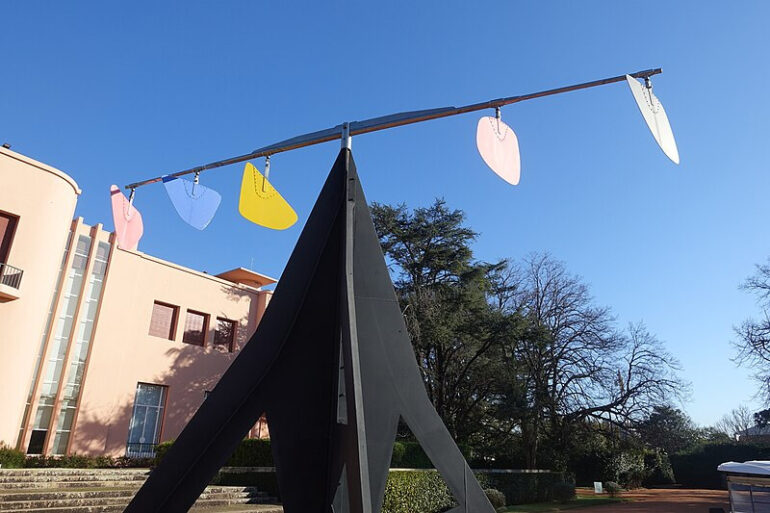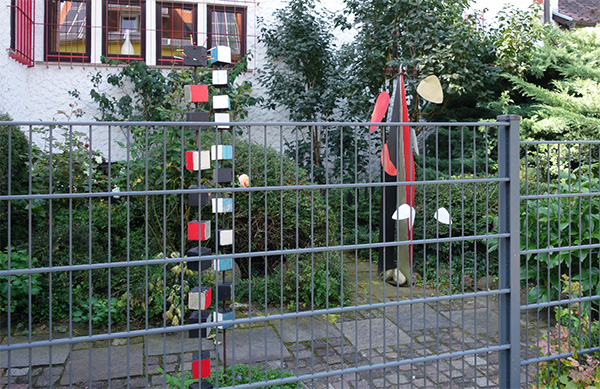Artistic developments in kinetic sculpture, in the life, and career span of Alexander Calder, resulted from a fusion of a combination of his early influences and a pioneering spirit that neither respected nor knew the boundaries of existing art. Through his iconic mobiles and landscapes, Calder succeeded in revolutionizing the seemingly distinct and unrelated worlds of movement and sculpture; he invited dynamic interactions with art. This enduring legacy serves as a motivation for contemporary artists as they choose to plunge into different dimensions of form and movement, putting him up on the pedestal of giants in the creation of sculptural expression.
Calder’s Early Influences and Introduction to Kinetic Art
The journey of Alexander Calder to kinetic art was initially the result of a combination of early influences, mainly due to his education in engineering and exposure to the avant-garde art scene. The first works were the mobiles of Alexander Calder, and this is how the concept of kinetic art was introduced in the world. His novel approach to kinetic sculpture shaped a steep artistic journey that Calder was to reach, defining the blurry line between art and movement. He revolutionized conventional sculpture by inducing a playful sense and dynamism to them, therefore inviting viewers to interact in a new dimension of art engagement.
The Development of Calder’s Mobiles and Stabiles
The kinetic sculpture of Alexander Calder: these are the mobiles and stabiles; the first, dangling from it, through delicate balancing, their elements animated by air currents; display Calder’s master conception of the reality of movement and the peace of movement in still forms of art. On the contrary, stabiles, with their fixed and grounded structures, manifest the features of the artist’s ability to give monumentality to sculptures both with grace and harmony, hence taking him to the head of the kinetic art movement.
Calder’s Impact on the Art World and Legacy
Alexander Calder’s influence in the world of art goes beyond his innovative works in the context of kinetic sculpture. The approach of the artist towards the art was childlike, at best, where he appeared to be seeking fresh possibilities in form and movement alike, which meant that waves of new artists could find fresh inspiration while he was re-inspired by them. It has been a precise demonstration that Calder’s works have continued imbibing and diffusing through the practice of contemporary arts, all because of the reflection of his continued influence and visionary spirit. He revived the artistic line with the strikingly new expressions in sculptures.
Exploring the Intersection of Playfulness and Innovation in Calder’s Work
When one tries to see more in-depth into the works of Alexander Calder, one is greeted by a playful and innovative spirit that pervades his work. It is this whimsicality in his kinetic sculptures that was truly used parallel to an inner creativity, displaying to the public the ability to breathe life and movement into things that were inbuilt to stay still. This is a playfulness and innovation that does not only catch the audience but challenges the traditional ruins of art, calling for the re-appropriation of the border between art and audience.
Alexander Calder’s legacy as one of the leading pioneers in kinetic art is a testament to the fact that he was able to seamlessly merge playfulness and innovation in transcending traditional artistic boundaries. In mobiles and stabiles, Calder redefined the expression of sculpture through inserting dynamic motion into static forms. His influence will never lessen, always urging artists on to the limit of what can be imagined, his considered the power of art in itself, to transform and draw audiences into something new and entirely different.
Photo Attribution:
1st & featured image by https://commons.wikimedia.org/wiki/File:Serralves_2023_(1).jpg

